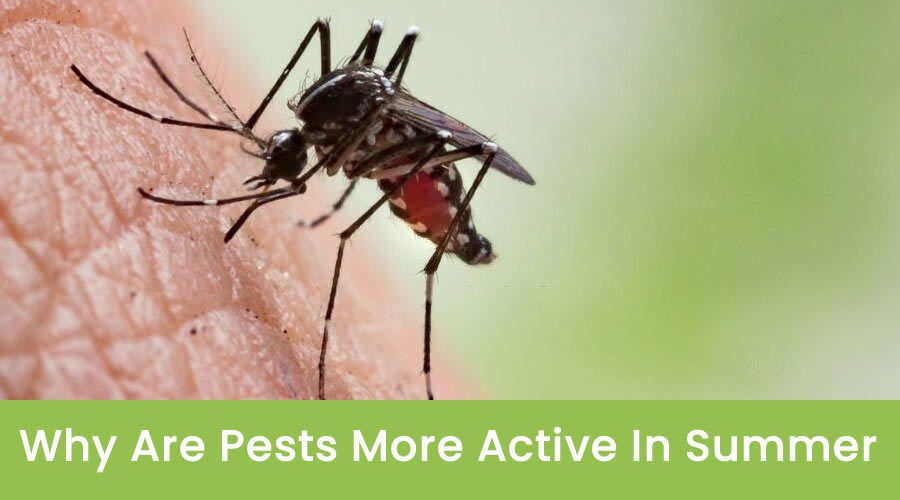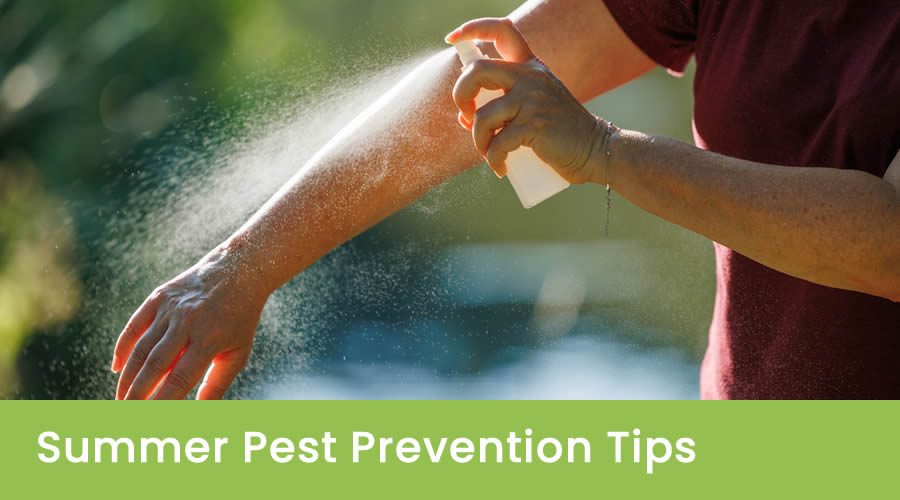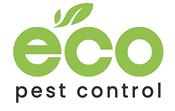Why Are Pests More Active in Summer?
5 Reasons Summer Is The Season For Pests

Pests increase in number during the summer. The season creates the right conditions for insects and rodents to grow and spread quickly. Warm weather, longer days, high humidity, and abundant food make summer the most active time for pests.
This increase in pest activity is not random. It follows predictable biological and environmental patterns. By understanding these factors, it becomes easier to see why pests thrive in hot months and how their presence can be reduced.
1. Warm Weather
Pests are cold-blooded creatures, so their presence depends on outside temperature. When summer brings heat, metabolism speeds up. They move faster, feed more, and reproduce at higher rates.
Warm weather accelerates pest life cycles. A single mosquito can produce hundreds of eggs, and those eggs turn into adults within days. Ants expand colonies faster, flies breed more often, and cockroach populations rise sharply.
2. Abundant Food Sources
Summer provides more resources than other seasons. Plants bloom, fruits ripen, and waste from social gathering increases. Pests take advantage of this.
The availability of food sources and increasing temperatures create ideal survival conditions. Ants target sugar. Flies feed on waste and organic matter. Cockroaches consume scraps left behind in kitchens and bins. With more meals, bugs multiply without difficulty.
3. Longer Days
Daylight lasts longer in summer months. More hours of sunlight in a day give many pests more time to feed. Extended feeding periods mean faster growth of colonies and larger populations.
Mosquitoes become present around dusk and continue until night. Ants and flies extend foraging throughout the day. The result is higher pest presence around homes and outdoor spaces.
4. High Humidity
Humidity creates the right moisture levels for many pests. Moisture prevents dehydration and supports breeding.
Mosquitoes lay eggs in stagnant water such as gutters, drains, and ponds. Cockroaches thrive in damp kitchens, bathrooms, and basements. Termites and ants remain prevalent in moist soil. Silverfish live and breed in humid environments. High humidity ensures pests remain strong and intense throughout the season.
5. Increased Outdoor Activities
Human activity rises in summer. More outdoor dining, barbecues, and gatherings create opportunities for pests.
Food and drink spills attract flies, wasps, and ants. Rubbish bins left uncovered draw cockroaches and rodents. Campgrounds and parks near water expose people to mosquito and midge swarms. Increased outdoor activities provide both nourishment and contact with humans, driving pest numbers higher.

How to Limit Summer Pest Problems
Although pests thrive in summer, control is possible. Basic steps reduce attraction and prevent infestations.
- Eliminate standing water: Clear gutters, buckets, and containers to block mosquito breeding.
- Secure food and waste: Store consumables in sealed containers and cover rubbish bins.
- Clean surfaces: Remove crumbs, spills, and food scraps immediately.
- Seal openings: Close cracks, gaps, and broken screens to block entry points.
- Maintain yards: Trim grass and manage waste to reduce pest habitats.
Regular action keeps pests from spreading indoors or around outdoor areas.
Final View
Pests are more active in summer because the season provides everything they need. Summertime heat accelerates the life cycle for many species of pests. Ample food and water sources support survival. Longer daylight hours extend feeding time. High humidity increases breeding. Outdoor routines add further opportunity.
Together, these factors create warm temperatures, plentiful food supply, and ideal conditions for rapid growth and spread. Summer is the peak season for insect growth, and preparation is essential to reduce their impact.
